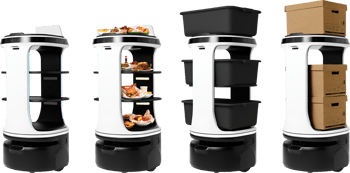The Journal of Food Protection reports that there are roughly 48 million cases of foodborne illness in the U.S. each year, resulting in an estimated 128,000 hospitalizations and 3,000 deaths. More than half of all foodborne outbreaks reported to the Centers for Disease Control (CDC) can be traced to restaurants.
Simply stated, all restaurants share a huge responsibility. It is our job to protect our diners from foodborne illnesses. Unfortunately, changes at the CDC may be making it harder for us to meet this life-and-death responsibility.
- Which food safety standards are changing, and what do these changes mean for the restaurant industry?
- How will the changes to food safety standards affect your operation?
- What can you do to offset these changes?
To find out, we caught up with Mary Albano, digital marketing consultant and content lead at Trust20, which provides online training and certification, including food safety training for food handlers, food allergy training, and food manager training.
Mary shared valuable insight on how Trust20 is approaching these changes as well as a few tips on what you can do to prepare.
How Are Food Safety Standards Changing?
Before we dive into the advice from our friends at Trust20, here’s a bit of background on what’s happening to food safety standards at the national level. The Centers for Disease Control (CDC) is responsible for providing state health departments with food safety guidelines and recommendations. From there, it’s up to individual states to carve out and enforce their own food safety standards.
However, states also rely on the CDC for critical data, information, and resources about threats to public health. One of these resources is something called the Foodborne Diseases Active Surveillance Network (FoodNet).
Today, the CDC is facing more than $3.5 billion in budget cuts. According to an article from the New York Times, FoodNet is one casualty of these cuts.
What Is FoodNet and Why Does It Matter?
Public health experts say that FoodNet is the most comprehensive method we have for tracking the spread of foodborne illnesses. Restaurants and food service providers depend on this network to identify possible root causes of foodborne illnesses before they can spread. This makes it an important part of the federal food safety net.
Ten participating states use FoodNet to share health department data and outbreak mapping. The information FoodNet provides affects an area containing 54 million people, or 16 percent of the U.S. population.
Acting against the urging of public health officials, the CDC quietly scaled back the FoodNet program in July 2025. Previously, FoodNet was responsible for tracking the spread of eight potential foodborne pathogens. Following budget cuts, FoodNet will now only track two pathogens – salmonella and E. coli.
According to NBC News, the six pathogens now removed from FoodNet’s oversight “can lead to severe or life-threatening illnesses, particularly for newborns and people who are pregnant or have weakened immune systems.”
How This Affects Restaurant Food Safety Standards
In the simplest terms, these cuts don’t change the responsibilities facing restaurants. They just make it harder for restaurants to meet these responsibilities.
Dr. J. Glenn Morris, director of the Emerging Pathogens Institute at the University of Florida and a major contributor to the development of FoodNet during his time in the Agriculture Department, explained, “Essentially, CDC is backing off on one of their best surveillance systems.”
Mary agrees. “We put out recommendations on our blog about what to do during a recall. And those recalls come down from that surveillance network. So it's harder for us and for restaurants to protect people.”
It’s also worth noting that health outbreaks don’t care about state borders. Failure to track a foodborne illness in one state can quickly lead to an outbreak for its neighbor. So thanks to the changes in FoodNet’s scope, it will be harder for restaurants everywhere to anticipate and protect against foodborne illnesses.
5 Ways Restaurants Can Continue To Protect Guests
While the standards and resources may be changing, our responsibility as restaurant operators remains the same — to ensure the health and safety of our patrons. So how can we continue to meet these responsibilities in a changing environment? Here are a few of the most important takeaways from our conversation with Mary.
1. Stay the Course
Don’t let changes to the federal food safety net distract you from your responsibility to your customers and community. Even as the CDC pulls back food safety resources, your job is to maintain the same high standards you always have.
As Mary advises, “Do a lot of the same things – being aware of time and temperature controls, checking the dates on packages, making sure that things are rotated appropriately, storing them correctly – really, all the fundamentals of food safety.”
Do not allow relaxing federal rules to influence your own approach to food safety. To the contrary, as the federal government pulls out of its responsibilities for ensuring consumer protections, it will only increase your share of the responsibility as a restaurant operator.
2. Focus on Relationships You Can Trust
Restaurants aren’t the only businesses that must now carry more responsibility. Food suppliers are also on the front line in the fight against foodborne illness. Mary highlights the importance of building relationships with suppliers you can trust.
For restaurant owners, Mary says it’s all about “knowing who they're working with, being able to put faith in their suppliers, knowing that they're sourcing foods responsibly, holding foods at the appropriate temperatures, and making sure the packaging is intact from the time it leaves their initial facility until it gets to the restaurant’s door.”
As partners in the food service industry, we’re all in this together. If we can no longer rely on the CDC for all the information we need, we have to be able to rely on each other. As Mary puts it, “This industry is built on relationships and trust. Restaurants are going to have to double down on that with their supply line.”
3. Prioritize Staff Training
The Journal of Food Protection reports that 64 percent of the foodborne outbreaks tracked during its study were caused by worker health and hygiene issues. The study also found that food preparation practices contribute to 34 percent of outbreaks.
The good news is that these outbreaks are preventable through better training. As Mary points out, restaurant owners may have little control over federal food safety standards, but “they can control their own space, their own team. They can say ‘There's uncertainty out there, but here, everybody has been trained in safe food handling practices.


Subscribe to Our Monthly HR & Staffing Newsletter
Find solutions for hiring, scheduling, and retaining top talent in today's competitive market.
“We do an annual training through Trust20 that refreshes this information. We have ongoing conversations before shifts start about what people can do.’”
Ultimately, says Mary, this kind of continuing education not only helps to keep your team up to date on current food safety best practices, but it also contributes to a calmer, more confident, and better prepared kitchen staff.
4. Turn to Local Guidelines
Federal food safety guidelines for restaurants may be relaxing, but the reality is that there are different food safety standards for every single state, county, and even local municipality. While this national patchwork of rules can complicate your restaurant’s efforts to remain compliant, it may actually be one of your best resources as the CDC continues its cuts.
“I think as things change at the federal level, we'll just continue to see states make decisions on their own,” predicts Mary.
If you’re unsure of where to turn for information, start with your state, county or township’s local health department. Local health departments can typically provide things like:
- Onsite inspections to ensure compliance with state and local food safety standards
- Investigations and public information on foodborne illness outbreaks
- Education and training programs for safe food handling, preparation and storage
- Food safety guidelines for restaurants that are just getting started
5. Expect More Rollbacks
As noted above, the CDC slashed the size of the FoodNet surveillance program in July without an official announcement. In fact, news of the change wasn’t made public until late August.
Any future rollbacks or pullbacks will likely also come without warning. So it’s best to consider this your warning. Take every measure to prepare your restaurant by:
- Investing in comprehensive staff training
- Conducting internal food safety inspections
- Auditing cleaning procedures, food storage, prep techniques, etc.
- Conducting preventive maintenance on equipment to ensure ovens are hot enough, freezers are cold enough, etc.
- Consulting with local health officials and restaurant inspectors to make sure you’re doing everything you could be to protect your guests
Perhaps most importantly, work every day to make food safety, consistency, and proper procedure a part of your restaurant’s culture through ongoing discussion, hands-on education, and consistency.
“At the end of the day,” says Mary, “Trust20 believes that running your restaurant with food safety at the forefront is better for business.”
Invest in Your Restaurant’s Efficiency
Ultimately, one of the best ways to keep your food safety practices in check is to run a more efficient operation. Inefficiency can lead to chaos, confusion, and delays. This, in turn, can lead your employees to cut corners, skip steps, and make mistakes.
All of this raises risks like cross-contamination, improper storage, insufficient hand hygiene, and more. Fortunately, powerful POS systems, automated inventory platforms, and staffing solutions can improve your restaurant’s operational efficiency and reduce your risk of foodborne illness.
But the right solution will depend on your business, your goals and your needs. Contact us today for your free, personalized consultation with one of our in-house restaurant technology pros.





